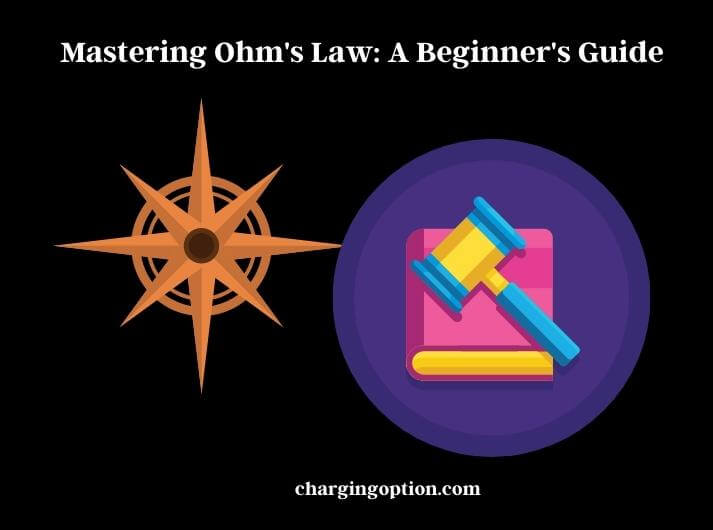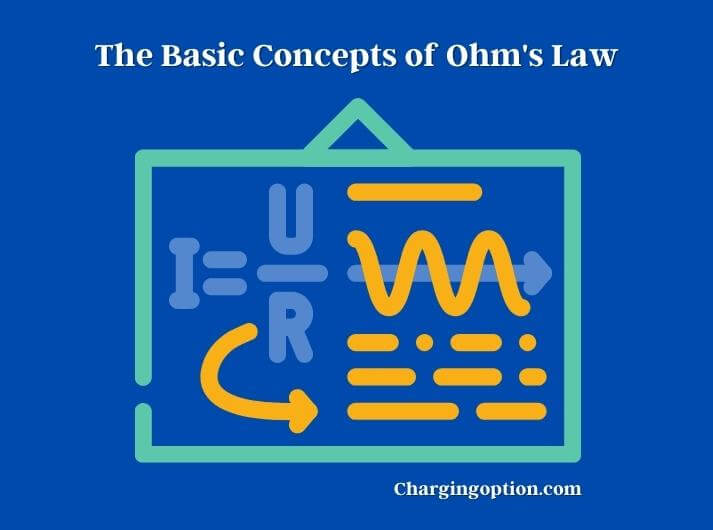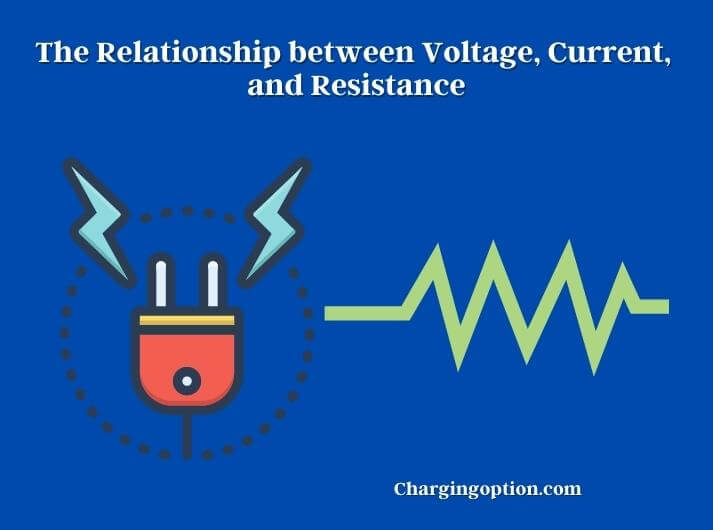Electricity is a vital aspect of modern life, powering everything from our homes and workplaces to our vehicles and communication devices. Understanding how electricity works and the principles that govern it is essential for many fields, from electrical engineering to physics.
One of the fundamental concepts in electricity is Ohm’s Law, which is a basic principle that helps us understand the relationship between voltage, current, and resistance in an electrical circuit.

Ohm’s Law is named after Georg Simon Ohm, a German physicist who first described the relationship between voltage, current, and resistance in 1827. Ohm’s Law is a simple yet powerful formula that has far-reaching applications in electrical engineering, electronics, and physics.
By understanding the principles of Ohm’s Law, we can calculate the values of voltage, current, and resistance in a circuit, and use this knowledge to design and troubleshoot electrical systems.
The Basic Concepts of Ohm’s Law
Before we dive into the specifics of Ohm’s Law, it is important to understand the basic concepts that underpin it. These concepts include voltage, current, and resistance, which are fundamental components of any electrical circuit.
Voltage, also known as electric potential difference, is a measure of the electric potential energy per unit charge. In other words, voltage is the force that drives electric current through a circuit. Voltage is measured in volts (V) and is represented by the symbol “E” or “V”.
Current, also known as electric current, is the flow of electric charge through a circuit. Electric current is measured in amperes (A) and is represented by the symbol “I”. In a circuit, current flows from the positive terminal of a voltage source to the negative terminal, passing through any components in the circuit along the way.

Resistance is the measure of how much a material opposes the flow of electric current through it. Resistance is measured in ohms (Ω) and is represented by the symbol “R”. Materials with high resistance will impede the flow of current, while materials with low resistance will allow current to flow more easily.
Now that we have a basic understanding of these concepts, we can explore how they relate to each other according to Ohm’s Law. According to Ohm’s Law, the current through a conductor between two points is directly proportional to the voltage across the two points and inversely proportional to the resistance between them. This relationship is expressed mathematically as:
I = V/R
where I is the current in amperes, V is the voltage in volts, and R is the resistance in ohms.
In other words, if we know the voltage and resistance in a circuit, we can use Ohm’s Law to calculate the current flowing through it. Conversely, if we know the current and resistance, we can calculate the voltage. And if we know the current and voltage, we can calculate the resistance.
This basic relationship between voltage, current, and resistance is crucial for anyone working with electrical circuits. In the next section, we will explore some real-world examples of Ohm’s Law in action.
The Relationship between Voltage, Current, and Resistance
Now that we understand the basic concepts of voltage, current, and resistance, we can delve deeper into the relationship between these components as described by Ohm’s Law.
As we mentioned earlier, Ohm’s Law states that the current flowing through a conductor is directly proportional to the voltage applied across it and inversely proportional to the resistance of the conductor.
To illustrate this relationship, let’s consider a simple circuit consisting of a battery, a resistor, and a light bulb. The battery provides a voltage of 9 volts (V) and is connected to the resistor, which has a resistance of 3 ohms (Ω). The resistor is then connected to the light bulb, which also has a resistance of 3 Ω.

Using Ohm’s Law, we can calculate the current flowing through the circuit. Since the voltage is 9 V and the total resistance of the circuit (the sum of the resistor and light bulb resistances) is 6 Ω, we can calculate the current as:
I = V/R = 9/6 = 1.5 amperes (A)
So, in this example, a current of 1.5 A is flowing through the circuit. We can also use Ohm’s Law to calculate the voltage drop across each component in the circuit. Since the resistor and light bulb have equal resistances, we can assume that the voltage drop across each component is equal. Thus, the voltage drop across the resistor is:
V = IR = 1.5 x 3 = 4.5 V
Similarly, the voltage drop across the light bulb is also 4.5 V.
This example demonstrates how Ohm’s Law can be used to calculate the current and voltage in a circuit. By manipulating the formula, we can also calculate the resistance of a component if we know the voltage and current, or the voltage if we know the current and resistance, and so on.
Ohm’s Law has numerous practical applications in everyday life. For example, electricians use Ohm’s Law to calculate the appropriate gauge of wire to use in a circuit, to design electrical systems that are efficient and safe, and to troubleshoot problems when they arise.
Electronics engineers use Ohm’s Law to design and optimize electronic circuits, such as those found in computers and mobile devices. By understanding Ohm’s Law, we can create more efficient and effective electrical systems, and troubleshoot problems when they arise.
It is important to remember that Ohm’s Law has its limitations and exceptions. In the next section, we will explore some of these limitations and how they can affect the application of Ohm’s Law in certain situations.
Applications of Ohm’s Law
Ohm’s Law has numerous applications in various fields, including electrical engineering, electronics, and physics. Let’s take a look at some of the practical applications of Ohm’s Law:
Circuit Design and Analysis
Ohm’s Law is one of the fundamental laws of electrical circuits. It is used to design and analyze circuits, including those found in homes, automobiles, and other electronic devices. By applying Ohm’s Law, engineers can calculate the voltage, current, and resistance of different components in the circuit, and ensure that the circuit operates safely and efficiently.
Troubleshooting Electrical Problems
Ohm’s Law can also be used to troubleshoot electrical problems. If a circuit is not functioning properly, an electrician or technician can use Ohm’s Law to determine the source of the problem. By measuring the voltage, current, and resistance at different points in the circuit, they can identify where the circuit is broken or where there is a short circuit.
Power Calculation
Ohm’s Law can be used to calculate the power consumed by a device or component in a circuit. The power consumed is equal to the product of the voltage and current, or P=VI. This calculation is important for designing power supplies, batteries, and other devices that supply or consume electrical power.
Electrical Safety
Ohm’s Law is also important for electrical safety. By calculating the current flowing through a circuit, engineers can design circuit breakers and other safety devices that can protect against electrical hazards such as electrocution and electrical fires.
LED Circuit Design
Ohm’s Law can be used to design and analyze circuits for light-emitting diodes (LEDs). LEDs require a specific amount of current to operate correctly, and by applying Ohm’s Law, engineers can design a circuit that supplies the correct amount of current to the LED. This can ensure that the LED operates at maximum efficiency and lifespan.
Resistor Selection
Ohm’s Law is used to select the correct resistor for a given application. By calculating the current and voltage in a circuit, engineers can determine the resistance required to limit the current to a safe level. This can ensure that the circuit operates correctly and does not overheat or become damaged.
Limitations and Exceptions to Ohm’s Law
While Ohm’s Law is a fundamental law in electrical engineering, it has some limitations and exceptions that are important to understand. Let’s take a look at some of the limitations and exceptions to Ohm’s Law:
Non-Linear Devices
Ohm’s Law only applies to linear devices, which are devices that have a linear relationship between voltage and current. Non-linear devices, such as diodes and transistors, do not follow Ohm’s Law. These devices have a non-linear relationship between voltage and current, and their behavior is more complex.
Temperature
The resistance of a conductor can vary with temperature. As the temperature increases, the resistance of a conductor typically increases as well. This means that Ohm’s Law may not apply accurately if the temperature of the conductor changes significantly.
Frequency
Ohm’s Law assumes that the circuit is operating at a constant frequency. However, in reality, many circuits operate at varying frequencies. In these cases, Ohm’s Law may not provide accurate predictions of voltage and current.
Limited Range
Ohm’s Law is only accurate within a certain range of voltages and currents. If the voltage or current is too high, the behavior of the conductor may become non-linear, and Ohm’s Law may no longer apply.
Circuit Components
Ohm’s Law assumes that the circuit components are ideal, meaning that they have no internal resistance or other non-ideal characteristics. In reality, all components have some internal resistance, capacitance, and inductance, which can affect the behavior of the circuit.
AC Circuits
Ohm’s Law is most commonly applied to DC circuits, but it can also be used for AC circuits. In AC circuits, the behavior of the circuit is more complex due to the effects of capacitance and inductance.
Engineers and technicians must take these limitations into account when designing and analyzing circuits and may need to use other laws and tools to accurately predict the behavior of non-linear or complex circuits.
Final Words
Ohm’s Law is a fundamental concept in electrical engineering that helps us understand the relationship between voltage, current, and resistance in electrical circuits. By understanding Ohm’s Law, we can calculate the values of voltage, current, and resistance in a circuit and use this knowledge to design and troubleshoot electrical systems.
It is important to remember that Ohm’s Law has its limitations and exceptions, such as non-linear materials and temperature effects on resistance.
Ohm’s Law is crucial for anyone working with electrical circuits. By applying the principles of Ohm’s Law, we can create more efficient and effective electrical systems, and troubleshoot problems when they arise. With its practical applications and real-world examples, Ohm’s Law is a key concept in the study of electricity and a valuable tool for engineers and scientists alike.
